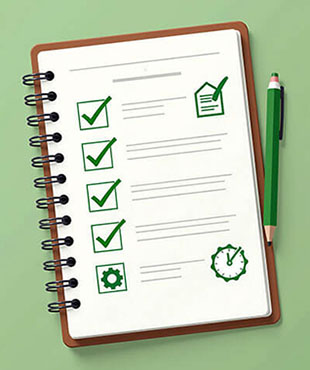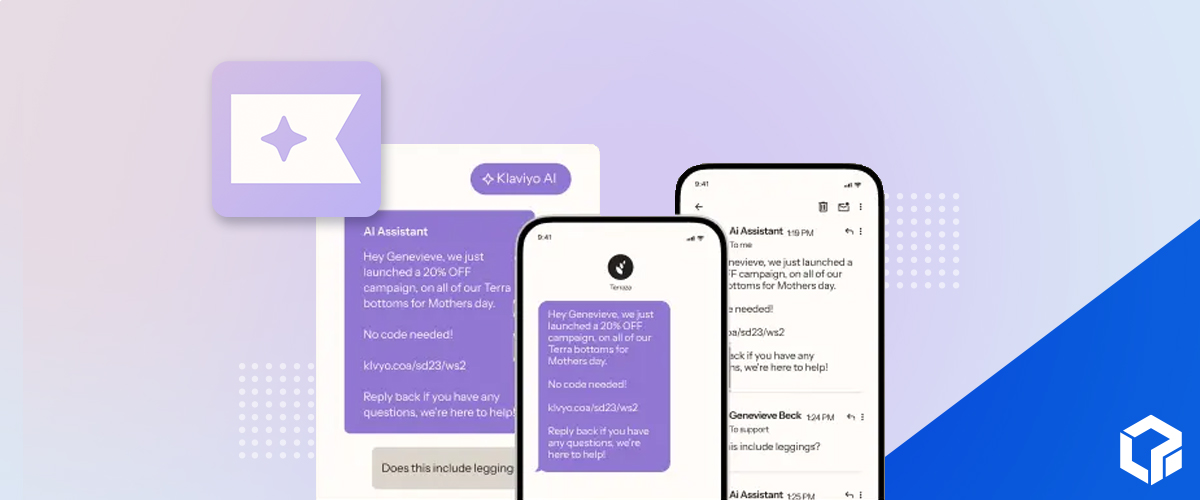Is email marketing still relevant in 2025? The short answer is yes. Throughout the years, email has remained one of the most dependable and powerful tools for businesses to build authentic connections with their audience. This enduring effectiveness is largely due to email marketing’s ability to consistently generate high ROI with relatively low risk.
If you’re wondering how to integrate email marketing into your business and get it right from the start, you’re in the right place. This article will not only walk you through the essentials of email marketing but also provide actionable tips to effectively use campaigns, set up automations, and leverage email as a growth engine for your brand.
After you’ve got the basics down, be sure to download our comprehensive email marketing QC checklist.
Why Email Marketing Still Works (& Why It’s Low Risk)
Email marketing remains a front-runner in building customer relationships. Why? Email is a personalized marketing solution. Your subscribers made the decision to allow your content into their inboxes. Unlike social platforms controlled by algorithms and ad saturation, your email list has already traveled through a few tiers of the sales funnel.
Email is an incredibly diverse marketing avenue. Whether you’re welcoming a new subscriber, promoting products, or saying thank you after a purchase, email does it all. Add SMS into the mix, and you’ve got a dynamic duo to engage customers in real-time. Including SMS early in the process ensures you don’t miss out on time-sensitive opportunities like notifying customers of flash sales or delivery updates.
It All Starts With Your List
Email marketing success starts with building a high-quality subscriber base. Your email list isn’t just a collection of addresses; it’s a community of people genuinely interested in your brand. Before they can see your content, they need an incentive to opt in. As such, your signup form is one of the first items you should set live.
The best way to achieve the results you’re looking for is to place your sign-up forms where they’re hard to miss—think website headers, footers, or mid-scroll popups. Note, however, that it’s crucial to ensure they’re not intrusive; incompatible signup forms can lead to site bounces. It’s also important to ensure that your form is optimized separately for desktop and mobile.

The other secret source for a high-conversion signup for? Thoughtful timing. Offering a checkbox sign-up opportunity during the checkout process or a popup form when visitors are actively engaging with your content can be a game-changer.
To further maximize opt-ins, it’s smart to provide some sort of incentive. Discounts, exclusive content, or free resources in exchange for an email address can serve as a compelling hook for users.
Email may be your primary focus, but don’t forget your SMS opt-in step. This simple addition will give your customers more freedom over how they want to be contacted, increasing your potential subscriber count. On top of that, it can help boost your future marketing efforts and strengthen your audience communication across various platforms.
Campaigns vs. Automations: What’s the Difference?
Both full-scale campaigns and simple automations (oftentimes called drip campaigns or flows) are essential parts of email marketing but serve very different purposes. Check out some of the key differences:
| Features | Campaigns | Automations |
|---|---|---|
| Consent Needed? | Yes, campaigns require explicit consent and must have marketing opt-in. | Automations can be sent with only implicit consent, since they’re triggered off of an action. (e.g., order confirmations) |
| When It Sends | Based on your editorial calendar, sales, and more. | Based on user behavior (e.g., abandoned cart) |
| Goal | Broad announcements, promotions, or educational content. | Personalized follow-ups |
| Setup | Manual setup for each send | Set it and optimize over time |
Why Use Both?
These two strategies work best in conjunction with each other. Automations handle timely, context-driven communications, while campaigns allow you to announce updates and reach several selected subscribers at once. When utilized together, they ensure your emails are both strategically planned and adaptable to user behavior.
Automations You’ll Want To Turn On First
Not sure where to start? Well, we didn’t plan to keep you hanging. As stated above, automations are the foundational building blocks of a successful email marketing strategy. To get the most out of them, beginners should prioritize the following must-haves:
- Welcome series: This is your first impression. Use it to introduce your brand, share your value-adds, and guide new subscribers. Think of it as a handshake that builds trust.
- Abandoned cart emails: Need to recover sales? Abandoned cart emails can remind customers about the items they left behind and encourage them to complete their purchase. Offer a small incentive and highlight value adds such as User Generated Content and payment options.
- Browse abandonment: Maybe a potential customer was just “window shopping.” Send a friendly nudge to revisit items they viewed. Include the same value-adds you do in your Abandoned Cart emails.
- Thank-you messages: Showing gratitude after a purchase builds loyalty. A personal thank-you email goes a long way in making customers feel valued. Consider setting the trigger to after their order is fulfilled to increase repurchases.
- Product upsells: Suggesting complementary or upgraded products can increase your average order value. Use this wisely based on past purchases.
- Review requests: Build social proof by inviting customers to review their purchases. Highlighting great customer feedback in your marketing streamlines trust-building.
- Replenishment reminders/win-backs: If you sell consumable products, this type of automation increases lifetime value by encouraging repeat purchases at just the right time. This can also be used to encourage subscriptions if applicable to your offerings.
What Campaigns Are (& When To Use Them)
Next up: campaigns. Unlike automations, campaigns tend to be highly event-driven. They’re perfect for promoting time-sensitive information like:

- Seasonal sales or limited-time offers
- Announcing new product launches
- Newsletters with company updates or educational content
- Special thank-you promos and holiday greetings
What makes campaigns stand out is their ability to consistently keep your audience informed and engaged. For example, you can send out a monthly newsletter to keep your audience informed, or you can drop a list of new products people might be interested in.
How They Work Together
Despite these differences, for email marketing to truly thrive, campaigns and automations need to work as a cohesive unit. Here’s a detailed look at how they can flow together when integrated properly:
- A customer signs up → Triggered automation sends a welcome series to introduce your brand.
- Monthly newsletter → Campaign drives engagement and traffic by sharing exciting news and promotions.
- Customer abandons their cart → Automation reactivates their interest with reminders or exclusive discounts.
- A holiday flash sale is announced → Campaign targets the entire list to promote this time-sensitive event.
When you blend these two approaches, you create a seamless customer experience that feels both meaningful and timely.
Quick Email Marketing Checklist To Get You Started

Starting strong is essential. This checklist will help you make sure your email marketing efforts are set up for success:
- Ensure a prominent, high-converting sign-up form (email + SMS).
- Design and launch your welcome series automation.
- Set up abandoned cart and browse abandonment automations.
- Develop a campaign calendar to keep communication consistent.
- Confirm compliance with consent rules.
- Align your content with your branding (both visuals and copy).
- Establish a reporting plan to track performance metrics (open rates, clicks, conversions).
Need a Hand Getting Started?
We recognize that this can sound like a lot if you’re unfamiliar with email campaigns. Don’t worry if this list seems overwhelming—we’re here to help. Logical Position helps brands prioritize what matters, develop winning email flows, and drive results that matter.
Want to make this marketing strategy work for your business? Let’s chat about our managed email marketing services! Your path to optimized communication and better ROI starts here. Sign up today and take the first step toward smarter email marketing.





